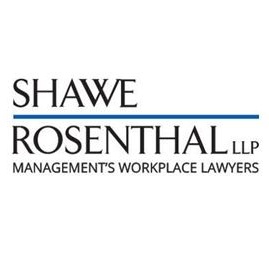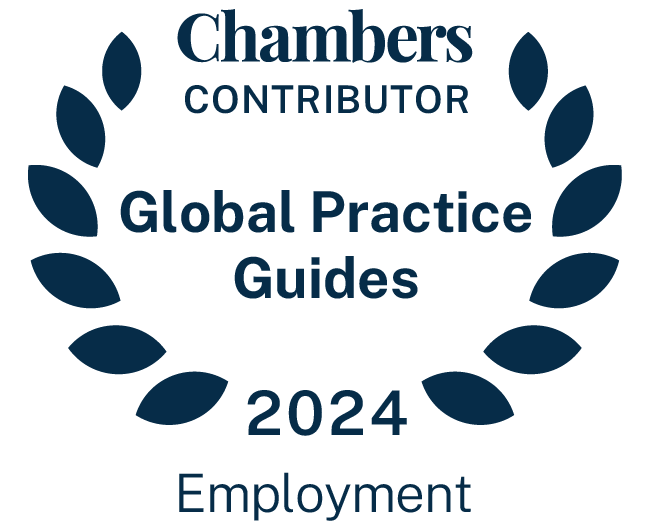Virginia Adopts First-in-Nation COVID-19 Workplace Safety Standards
On July 27, 2020, Virginia’s COVID-19 Emergency Temporary Standard (“ETS”), 16VAC25-220, went into effect after being adopted by the Department of Labor and Industry’s (DOLI) Virginia Occupational Safety and Health (VOSH) Program and the Virginia Safety and Health Codes Board. The ETS “is designed to establish requirements for employers to control, prevent, and mitigate the spread” of COVID-19 “to and among employees and employers.” Unless superseded by a permanent standard or repealed by the Virginia Safety and Health Codes Board, the ETS will expire within six months of its effective date (on January 27, 2021).
The DOLI has provided guidance to educate and train employers and their employees on how to comply with the new ETS. Important obligations imposed by the new ETS with links to related materials are summarized below.
Assessment, Implementation, and Training
Employers must assess their workplace for hazards and job tasks that could potentially expose employees to COVID-19. Employers must classify each job task according to the hazards employees are potentially exposed to and ensure compliance with the applicable sections of the ETS for “very high,” “high,” “medium,” or “lower” risk levels of exposure. Employers may have employees classified in more than one risk level.
Very High Risk: Job tasks with “very high” risk levels are those in places of employment with high potential for employee exposure to known or suspected sources of COVID-19 during specific medical, postmortem or laboratory procedures.
High Risk: Jobs with “high” risk levels are those that have high potential for exposure inside six feet to known or suspected sources of COVID-19.
Medium Risk: Jobs with “medium” risk levels are ones that require more than minimal occupational contact inside six feet with other employees, other persons, or the general public who may be infected with COVID-19, but who are not known or suspected to be infected with the virus. Examples of workplaces with medium risk levels include: schools, high population density work environments (e.g., poultry, meat, other food processing; manufacturing, etc.), high-volume customer facing retail settings (grocery stores, restaurants, bars, etc.), and mass gathering venues (e.g., sports, entertainment, movies, theaters, etc.)
- Employers in this risk group are to provide—and employees are to wear—face coverings to employees that have job tasks where physical distancing cannot be feasibly practiced if the hazard assessment has determined that PPE such as respirators or surgical/medical procedure masks are not required for the job task.
- If employees are in customer facing jobs, employers are to provide—and employees are to wear—face coverings.
- If an employer has eleven or more employees and job tasks that are classified as medium risk, the employers must prepare an Infectious Disease Preparedness and Response Plan and train employees on the practices by September 25. An Infectious Disease Preparedness and Response Plan template can be found
Lower Risk: Jobs with a “lower” risk level do not require contact inside six feet with persons known to be, or suspected of being, or who may be infected with COVID-19. Employees in this category have minimal occupational contact with other employees, other persons, or the general public; or are able to achieve minimal occupational contact through the implementation of engineering, administrative and work practice controls.[1]
- When it is necessary for an employee to have brief contact with others inside of a distance of six feet, employers are required to provide—and employees are to wear—a face covering.
- E.g., passing another person in a hallway that does not allow physical distancing of six feet is considered brief, minimal contact which would require a face covering.
- Employers with a lower risk workplace must provide employees with basic written or oral information on COVID-19 hazards and measures to minimize exposure by August 26, 2020. There is no written certification of training requirement for employers in the lower risk category. VOSH has provided a training aid which satisfies the ETS requirements here.
Employers must make a written certification of the assessment and retain the form either electronically or as a hard copy in a location easily accessible to employees and inspectors. VOSH provided a detailed hazard assessment so that employers may properly assess their level of exposure risk. This document can also be used to satisfy the ETS’s written certification requirement. If the employer has multiple locations where the job tasks are similar in nature and expose employees to the same hazard, the tasks may be grouped for classification purposes. In that case, individual worksite locations need to be made aware of corporate assessments and ensure they can provide appropriate protections.
Notably, employers with medium, high, and very high-risk workplaces were required to provide COVID-19 training to all employees, regardless of their job task classification, by August 26, 2020.
These employers must also maintain a written certification of training. The DOLI has provided an acceptable written training certification form that can be found here.
Additional Measures for Compliance for All Employers
The DOLI provides further guidance on additional steps that should be taken to ensure compliance with the new ETS.
- Establish and implement procedures to ensure employees known or suspected of having COVID-19 do not come to work, as well as procedures for them to return to work. This return to work policy must include:
-
- Prohibiting employees known or suspected of having COVID-19 from reporting to work until they have been cleared to return through either a symptom-based or test-based strategy.
- If a test-based strategy is not used, consultation with appropriate healthcare professionals concerning when an employee’s symptoms indicate it is safe for them to return to work.
- If an employer discovers that 3 or more people that have been present at the workplace in the last 14 days have tested positive for COVID-19, the employer must notify the Virginia DOLI.
- If an employer receives a report of a positive COVID-19 test, within 14 days of receiving the report the employer must notify employees who may have been exposed, other employers if their employees were present at the work site, and the building or facility owner.
- Building owners are required to notify employer tenants of a COVID-19 positive test of an employee in the building.
- Make handwashing and hand sanitizer available to all employees where feasible.
- Establish and implement a system for employee self-assessment and screening for COVID-19 signs and symptoms.
- Provide flexible sick leave policies, telework, staggered shifts, and other administrative/work practice controls when feasible to reduce or eliminate contact with others inside six feet. Encourage employees to report symptoms by ensuring they are aware of any company sick leave policies and alternative working arrangements, as well as the paid sick leave available through the Families First Coronavirus Response Act (FFCRA).
- If an employee does not understand English, employers are required to provide training to an employee in a language other than English or in some other manner that they can understand.
- Employers must ensure that they are in compliance with the anti-discrimination provisions in the new ETS. This includes refraining from discharging or in any way discriminating against an employee because they have raised a reasonable concern about infection control regarding the COVID-19 disease in the workplace with the employer, other employees, a government agency, or to the public through any form of media.
- Requests to the Department for religious waivers from the required use of respirators, surgical/medical procedure masks, or face coverings will be handled in accordance with the requirements of applicable federal and state law, standards, regulations and the U.S. and Virginia Constitutions, after Department consultation with the Office of the Attorney General. Requests for religious waivers can be sent to:
Division of Legal Support
Virginia Department of Labor and Industry
600 E. Main Street, Suite 207
Richmond, VA 23219
[email protected] (mailto:[email protected])
[1] Examples of such controls include:
- Installation of floor to ceiling physical barriers constructed of impermeable material;
- Staggered work shifts that allow employees to maintain physical distancing from other employees, other persons, and the general public;;
- Delivering services remotely by phone, audio, video, mail, package delivery, curbside pickup or delivery, etc., that allows employees to maintain physical distancing from other employees, other persons, and the general public; and
- Mandatory physical distancing of employees from other employees, other persons, and the general public.
**Thank you to Evan Conder for his assistance in writing the above article.







